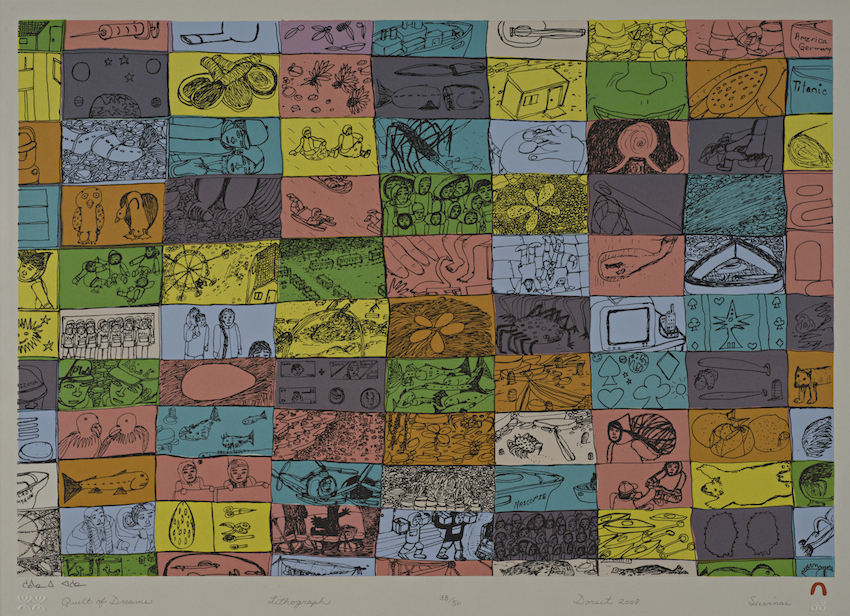
Shuvinai Ashoona (Inuit, Cape Dorset, Canada, b. 1961)
Quilt of Dreams, 2009
Lithograph, 38/50
18.25 x 25.25 inches
Reproduced with the permissions of Dorset Fine Arts
“When I start to draw I remember things that I have experienced or seen. Although I do not attempt to recreate these images exactly, that is what might happen. Sometimes they come out more realistically but sometimes they turn out completely different. That is what happens when I draw.”
— Shuvinai Ashoona
Coming from a long line of artists, Shuvinai Ashoona began drawing around the age of 25 in a time of significant transformation in the region. Her work, like many of her peers’, portrays these changes through means which reflect concurrent changes within the Inuit artistic tradition.
In Quilt of Dreams, Shuvinai Ashoona stitches together copious elements of her artistic vocabulary, capturing a trajectory of specific motifs that recur in her body of work. Through the fabrication of this quilt – a medium which lends itself to storytelling – she challenges the dominant Western narrative of Inuit extinction by proposing a narrative of their continuance through combining a more ‘traditional’ form (the quilt) with the multi-colored patches that contain realistic and imaginative images of Inuit life. She does this by drawing upon her surroundings, her culture, and Inuit histories to weave together a complex portrait of Inuit life that asserts their continued existence.
In recalling her artistic roots of drawing physical landscapes through images of tents, community, and animals, she simultaneously evokes the longstanding relationship between Indigenous peoples and the land. By highlighting this essential relationship, she establishes a firm foundation from which she can further create her counter-narrative of the Inuit’s unceasing interaction with the land. She then continues on to juxtapose seemingly disparate motifs – such as animals historically significant to the Inuit and a helicopter – in order to affirm the Inuit people’s uninterrupted presence. Just as a television set spatially lies next to a stylized spider-like figure in the drawing, so too does the quilt assert a definitive connection between the historical and the contemporary.
These varying types of images also present the idea of blurring the line between the real and the imaginative. In doing so, Ashoona defies the conventional conception that such people, objects, and creatures cannot coexist in the same space. She does “not attempt to recreate these images exactly,” which in turn invites the audience to further explore her own narrative.
Finally, the way in which Ashoona constructs the drawing of the quilt challenges Western perceptions of the limited narrative- that is, a definite beginning, a definite end, and a linear progression in the middle. She, instead, creates borders that are not actually borders at all; her patches along the edges of the quilt suggest a continuing story, both physical and ideological. In this way, the artist visually represents the continued vitality of Inuit storytelling.
Maggie López ’14 & Jesse Peters ’14
